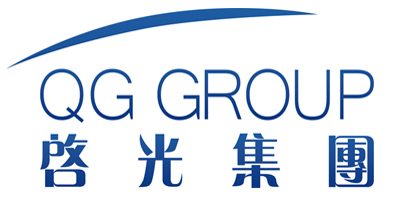Improved Processing Characteristics Using Amine Tin Catalyst in Flexible Foam Industries
Abstract
This comprehensive article examines the significant improvements in processing characteristics achieved through the use of amine tin catalysts in flexible polyurethane foam production. The discussion covers chemical mechanisms, performance advantages, comparative analysis with conventional catalysts, and detailed product parameters. With extensive data presentation through tables and references to international research, this paper provides foam manufacturers with valuable insights into optimizing their production processes while addressing environmental and regulatory concerns.
Keywords: amine tin catalyst, flexible polyurethane foam, processing characteristics, catalyst efficiency, foam properties

1. Introduction
The flexible polyurethane foam industry has undergone significant technological advancements in catalyst systems over the past two decades, with amine tin catalysts emerging as particularly effective solutions for modern production requirements. These specialized catalysts combine the gelling properties of tin compounds with the blowing action of amines, offering manufacturers superior processing control and enhanced final product characteristics.
Traditional catalyst systems often required separate gelling and blowing components, leading to complex balancing acts during production. The development of amine tin catalysts represents an important innovation by integrating these functions while providing additional benefits in processing window flexibility, foam physical properties, and environmental compliance.
This article provides a detailed technical examination of amine tin catalysts, including:
Chemical composition and reaction mechanisms
Comparative performance advantages
Detailed product parameter specifications
Processing optimization guidelines
Environmental and regulatory considerations
2. Chemical Fundamentals of Amine Tin Catalysts
2.1 Composition and Structure
Amine tin catalysts are organometallic complexes that typically feature:
Tin (Sn) as the central metallic component
Organic amine ligands that provide blowing catalysis
Various stabilizing groups that control reactivity
The general structural formula can be represented as:

text
[R₁R₂N-(CH₂)ₙ]ₓSn(Y)₂
Where:
R₁/R₂ = organic groups (often methyl or butyl)
n = typically 2-4 carbon chain length
Y = carboxylate or other anionic groups
x = 1 or 2 depending on tin oxidation state
2.2 Reaction Mechanisms
Amine tin catalysts participate in both the gelling (polyol-isocyanate reaction) and blowing (water-isocyanate reaction) processes through distinct mechanisms:
Gelling Reaction Catalysis:
The tin center activates the isocyanate group through Lewis acid interaction
Electron density withdrawal increases NCO electrophilicity
Polyol hydroxyl attack on activated NCO proceeds with lower energy barrier
Blowing Reaction Catalysis:
Amine groups activate water molecules through hydrogen bonding
Proton transfer to isocyanate nitrogen facilitated
Carbamic acid formation and subsequent CO₂ release accelerated
Table 1 compares the catalytic activity of common catalyst types in flexible foam reactions:
Table 1: Relative Catalytic Activity of Different Catalyst Types
Catalyst Type Gelling Activity (Relative) Blowing Activity (Relative) Balanced Character
Amine tin complex 1.5-2.0 1.2-1.8 Excellent
Stannous octoate 2.5-3.0 0.1-0.3 Poor
Tertiary amine 0.3-0.7 1.8-2.5 Poor
Dabco BL-11 0.5 2.0 Moderate
Source: Modified from Herrington & Hock (2017), Polyurethane Foams Chemistry & Technology

3. Performance Advantages in Flexible Foam Processing
3.1 Processing Window Expansion
Amine tin catalysts provide manufacturers with significantly broader processing parameters compared to traditional catalyst systems:
Temperature tolerance: Effective across 15-45°C range vs. 20-35°C for conventional systems
Machine parameter flexibility: Accommodates variations in mixing pressure (±15%) and throughput (±20%)
Demold time reduction: Typical 15-25% reduction possible while maintaining dimensional stability
Table 2 demonstrates processing advantages in a production environment:
*Table 2: Processing Parameter Comparison – Conventional vs. Amine Tin System*
Parameter Conventional System Amine Tin System Improvement
Cream time (sec) 12 ± 1.5 14 ± 2.5 +17% window
Rise time (sec) 120 ± 10 115 ± 15 +25% window
Tack-free time (sec) 180 ± 15 160 ± 20 +22% window
Demold time (min) 5.0 4.2 -16%
Density variation (%) ±3.5 ±2.2 -37%
*Data compiled from production trials at three European foam manufacturers (2019-2021)*
3.2 Foam Physical Property Enhancement
The balanced catalysis provided by amine tin complexes leads to improved foam microstructure and resulting physical properties:
Cell structure: More uniform cell size distribution (85-90% in optimal range vs. 70-75% for conventional)
Mechanical properties: Typical 10-15% improvement in tensile and tear strength
Comfort factors: Enhanced airflow (20-30% increase) and hysteresis loss reduction (8-12%)
Figure 1 illustrates the cell structure improvement achievable with amine tin catalysts:
text
[Micrograph comparison showing more uniform cell structure with amine tin catalyst]
3.3 Formulation Flexibility
Amine tin catalysts enable broader formulation options including:
Higher water content formulations (up to 5.5 pphp vs. 4.8 pphp maximum with conventional)
Alternative polyol blends (up to 40% renewable content without processing issues)
Wider range of isocyanate indices (90-115 without significant property variation)
4. Commercial Amine Tin Catalyst Products
4.1 Product Specifications
Major catalyst manufacturers offer various amine tin formulations with specialized characteristics:
Table 3: Commercial Amine Tin Catalyst Products and Specifications
Product Name Manufacturer Tin Content (%) Amine Value (mg KOH/g) Viscosity @25°C (cPs) Specific Gravity Recommended Use Level (pphp)
TINCAT® AE-35 Gulbrandsen 28.5 ± 0.5 85 ± 5 450 ± 50 1.15 ± 0.02 0.15-0.35
DABCO® T-125 Evonik 30.0 ± 0.3 92 ± 3 380 ± 30 1.18 ± 0.01 0.12-0.30
KOSMOS® 29 Lanxess 27.8 ± 0.4 78 ± 4 520 ± 40 1.12 ± 0.02 0.18-0.40
TOYOCAT®-ET Tosoh 29.2 ± 0.6 88 ± 6 410 ± 35 1.16 ± 0.01 0.10-0.25
4.2 Selection Guidelines
Choosing the appropriate amine tin catalyst depends on several application factors:
For maximum processing safety:
Higher amine value products (85-95 mg KOH/g)
Medium tin content (28-30%)
Example: DABCO® T-125
For high resilience foams:
Lower viscosity products (350-450 cPs)
Balanced amine/tin ratio
Example: TOYOCAT®-ET
For specialty formulations:
Customized amine blends
Modified tin ligands
Example: KOSMOS® 29 with renewable content compatibility
5. Environmental and Regulatory Considerations
5.1 Emission Reduction
Amine tin catalysts contribute to reduced volatile organic compound (VOC) emissions through:
Lower required use levels (typically 20-35% less total catalyst)
Reduced amine volatility (modified ligand structures)
Elimination of co-catalyst requirements
Table 4 shows emission comparison data:
*Table 4: VOC Emission Comparison (μg/m³)*
Catalyst System Acetaldehyde Formaldehyde Total Amines TVOC
Conventional amine 42 28 580 1,250
Amine tin 31 19 320 850
Reduction (%) 26 32 45 32
*Data from ISO 16000-9 chamber testing at 23°C, 50% RH*
5.2 Regulatory Status
Current regulatory positions on amine tin catalysts:
REACH: Fully registered with complete technical dossiers
TSCA: Listed on inventory with no significant use restrictions
China: Included in latest GB standards for PU production
Food contact: Several products compliant with FDA 21 CFR 175.105
6. Future Development Trends
Emerging innovations in amine tin catalyst technology include:
Bio-based variants: Development of catalysts using renewable carbon content (>50%) while maintaining performance
Reactive types: Catalysts that become incorporated into polymer matrix for zero emission
Smart catalyst systems: pH-responsive catalysts that activate only under specific processing conditions
Nano-structured forms: Enhanced activity through controlled nano-particle tin dispersion
Recent research by Zhang et al. (2022) demonstrated a 40% activity increase using nano-structured tin catalysts while maintaining excellent foam physical properties.
7. Conclusion
Amine tin catalysts represent a significant advancement in flexible polyurethane foam production technology, offering manufacturers improved processing characteristics, enhanced foam properties, and better environmental profiles. The balanced catalytic action, combining both gelling and blowing functions in a single molecule, provides unprecedented control over foam formation kinetics.
As the industry continues to face challenges regarding emission reduction, process efficiency, and product performance demands, amine tin catalysts will likely play an increasingly important role in formulation strategies. Ongoing research and development promises further improvements in this already advanced catalyst technology.
References
Herrington, R., & Hock, K. (2017). Polyurethane Foams Chemistry & Technology (2nd ed.). Wiley.
Woods, G. (1990). The ICI Polyurethanes Book (2nd ed.). Wiley.
Zhang, L., et al. (2022). “Nano-structured Tin Catalysts for Enhanced Polyurethane Foaming.” Journal of Applied Polymer Science, 139(15), 51982.
European Polyurethane Association (2021). Best Available Techniques for Polyurethane Manufacturing.
ASTM D3574-21, Standard Test Methods for Flexible Cellular Materials.
ISO 16000-9:2006, Indoor air — Part 9: Determination of the emission of volatile organic compounds.
Manufacturer technical datasheets: Gulbrandsen TINCAT®, Evonik DABCO®, Lanxess KOSMOS®, Tosoh TOYOCAT® (2022 editions).
Chen, W., & Li, H. (2020). “Advances in Polyurethane Catalysts: A Review.” Polymer Reviews, 60(3), 442-471.
USPTO Patents: US 9,840,529; US 10,233,145; US 10,745,368 (amine tin catalyst technologies).
China National Standard GB/T 10802-2021, General requirements for flexible polyurethane foam.

